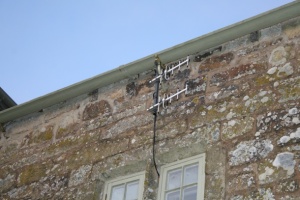Mobile use of white-space networking gets one step closer for UK

Ofcom, the UK telecoms regulator, has announced a framework and started a consultation on the use of white-space spectrum to provide networking for wireless devices, aiming for services to go live before the end of 2013.

White space is wireless spectrum that has been allocated for a purpose but is not in use for geographical or other reasons, allowing different services to share the frequencies on a no-interference basis. Potential uses of the spectrum range from broadband access in rural communities to machine-to-machine communications (M2M).
"Spectrum itself is a limited resource that is in huge demand, fuelled by the recent explosion in smartphone use and other wireless applications. White-space devices offer a creative and efficient way to use spectrum that would otherwise lay fallow," Ofcom said in a statement on Thursday.
The regulator launched the consultation on Thursday, placing the first white-space spectrum in the UHF TV bands 470MHz to 790MHz. Sub-1GHz spectrum has been recognised by Ofcom as having better reach and in-building penetration than spectrum above 1GHz, making it a particularly attractive proposition for mobile networking.
"We have now developed a framework for the overall operation of white-space devices in the UK that is designed to ensure that we can manage the risks of harmful interference to the existing users of the UHF TV band, which are Digital Terrestrial Television (DTT) and Programme making and special events (PMSE)," Ofcom said in the consultation announcement.
Ofcom is now inviting responses to its published framework agreement, and the consultation period will run until 10 January.
Clearing the way
In an earlier consultation on the use of white space for mobile devices, Ofcom said it would be best to class the spectrum as licence-exempt. However, this will require a change in legislation, as it overlays licensed spectrum that has been previously allocated on a sole-user basis.
For example, when EE wanted to reuse its 1800MHz spectrum for 4G services, instead of the 2G it is already used for, it needed to seek permission from Ofcom for the change.
"We concluded that licence-exempt devices could be authorised to use TV white spaces, so long as they radiated in specific frequencies and at specific powers communicated to them by TV white-space databases that had met Ofcom's requirements," the regulator said in its most recent consultation.
"Under these conditions, we believed that it would be achievable to ensure that such devices would not cause harmful interference to the existing licensed services."
White-space devices must know where they are, and ask a central database to allocate frequencies and powers that are safe to use at that location without interfering with the spectrum's primary users.
"Under Ofcom's proposals, a white-space device will not be able to start transmitting until getting clearance from an online database qualified by Ofcom. This database will provide updated information on where the white spaces are and the power level that devices would need to be restricted to if they wanted to use them," the regulator said.
In addition to providing connectivity in rural broadband or M2M scenarios, Ofcom forsees white space as being used to provide "enhanced Wi-Fi" with added capacity and increased range, "potentially enabling Wi-Fi networks that stretch across towns and cities."